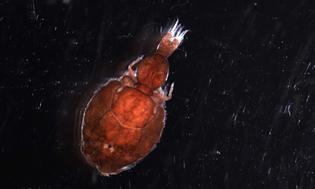 Sea lice infestation as a source of marine mortality of outwardly migrating Atlantic salmon smolts has been investigated by treating groups of ranched salmon, prior to release, with a prophylactic sea lice treatment. This research was recently published in the Journal of Fish Diseases.
Sea lice infestation as a source of marine mortality of outwardly migrating Atlantic salmon smolts has been investigated by treating groups of ranched salmon, prior to release, with a prophylactic sea lice treatment. This research was recently published in the Journal of Fish Diseases.- The results of this study have been interpreted, by some, as suggesting that sea lice released from fish farms do not harm wild fish. However, fish were released from 8 different rivers, many of which were not in the areas of Ireland where fish farming takes place or where the density of farms was low. In the case of many of the bays highlighted in the paper, the study is actually examining the effects of background levels of sea lice on salmon survival. The total national production of farmed salmon in Ireland is approximately 12,000 to 14,000t and is largely confined to a few intensively farmed bays in Connemara, in the west of Ireland and some bays along the north coast.
- It could be argued that they show the effects natural sea lice levels may have on the overall survival of salmon at sea. Wild fishery organisations have never argued that natural levels of sea lice infestation are detrimental to Atlantic salmon populations. By implication, the paper also demonstrates the risk to wild salmon stocks if the level of exposure to lice significantly increases due to poor husbandry on fish farms.
- The impact of sea lice, emanating from fish farms, on salmon is likely to be both bay specific and confined to specific years, when the occurrence of a lice epizootic overlaps with the migration of wild salmon smolts.
- In addition to the range of bays utilised in the study, there are a number of aspects of the experimental design which would reduce the likelihood of identifying such effects arising from fish farms.
- No data are presented on the size of the released fish but, given that the fish in question were ‘established ranched strains’, it is safe to assume that they were significantly larger than wild smolts. As the physiological effects of sea lice are a function of fish size the experimental design employed would have the effect of ‘dulling down’ any potential effects. We understand that the line bred Burrishoole strain of ranched salmon was established in 1964 and the careful maintenance of this stock has resulted in this strain showing consistently higher survival rates at sea than the Cong, Delphi and Carrigadrohid (Lee and Erne releases) ranched stocks. This differential survival is not mentioned in the paper.
- The paper notes that salmon smolts are expected to be in open waters within 48hrs, in marked contrast to sea trout, which remain in coastal waters.
- Our understanding is that the smolts were released directly into the lower sea pools or semi-saline sea loughs, and as mentioned above quickly move out through the bay and into open water. However, wild smolts might be expected to leave rivers over a number of weeks. To avoid an impact on migrating smolts any farms in the vicinity would only need to maintain low lice levels for a matter of days, during the experimental releases, as opposed to a much longer period for wild fish.
- As this paper was not designed to assess sea lice effects in relation to aquaculture, no effort was made to correlate the results presented in the paper with the existence of neighbouring farms or indeed the levels of lice present on these farms, during the years when the experiments were taking place. It is worth noting that this study, similar to other studies of the type utilised in the paper, cannot identify the source of the sea lice in question.
- Despite these factors, there was a significantly greater return of treated fish in 11 of 28 release groups (40%). The paper highlights that the treatment effect is highly statistically significant (P<0.001 – i.e. the probability of seeing the same effect by chance alone would be less than 1 in 1000).
- The authors concluded that the results suggest that while sea lice-induced mortality on outwardly migrating smolts can be significant, it is a minor and irregular component of marine mortality in the stocks studied and is unlikely to be a significant factor influencing conservation status of salmon stocks. In a recent paper, which analysed similar data sets, a very different, and arguably more biologically relevant, conclusion was drawn. As Krkosek et al. highlighted:
While the assembled data indicate a clear consistency in direction of parasiticide effects on survival, the magnitude of the odds ratio is relatively small. This is owing to the very high marine mortality that naturally affects both control and treatment groups. This, perhaps, underlies the conclusions of some studies that the effect is biologically insignificant relative to the overall mortality within a salmon life cycle. However, our analyses based on paired sample t-tests and mixed-effects models allowed us to account for the high natural mortality and isolate the estimated loss of recruitment owing to parasitism, revealing a large effect of parasites. Precisely because natural mortality rates are high, even a proportionally small additive mortality from parasites can amount to a large loss in salmon recruitment.
- This is the key point which has been lost in the interpretation of the data presented in the recent study.
- Whilst ASFB continue to take all causes of marine mortality seriously, our focus will continue to be on those aspects of marine mortality that are under human control, including, but not limited to, sea lice released from fish farms.
ASFB would like to thank Prof Ken Whelan, AST Research Director, for his help in producing this statement.
